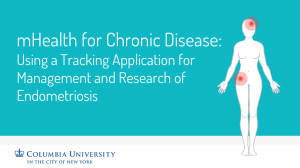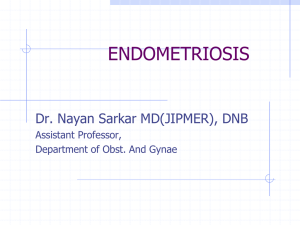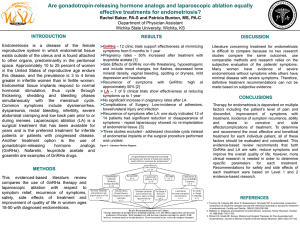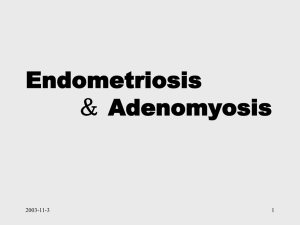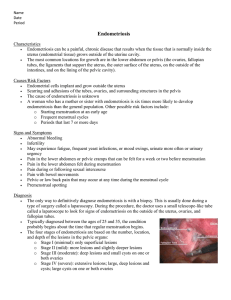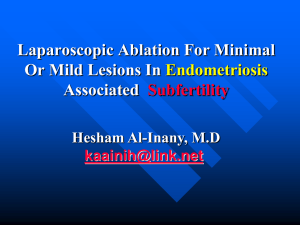Prevalence, characteristics and management of endometriosis
advertisement
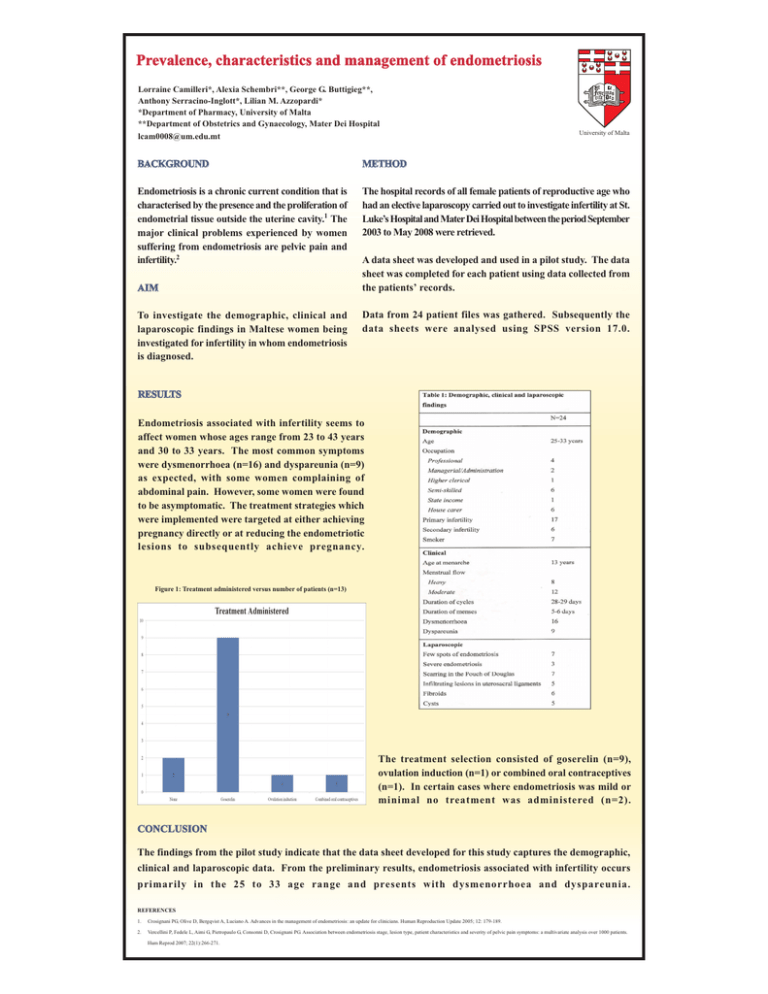
Prevalence, characteristics and management of endometriosis Lorraine Camilleri*, Alexia Schembri**, George G. Buttigieg**, Anthony Serracino-Inglott*, Lilian M. Azzopardi* *Department of Pharmacy, University of Malta **Department of Obstetrics and Gynaecology, Mater Dei Hospital lcam0008@um.edu.mt University of Malta BACKGROUND METHOD Endometriosis is a chronic current condition that is characterised by the presence and the proliferation of endometrial tissue outside the uterine cavity.1 The major clinical problems experienced by women suffering from endometriosis are pelvic pain and infertility.2 The hospital records of all female patients of reproductive age who had an elective laparoscopy carried out to investigate infertility at St. Lukes Hospital and Mater Dei Hospital between the period September 2003 to May 2008 were retrieved. AIM To investigate the demographic, clinical and laparoscopic findings in Maltese women being investigated for infertility in whom endometriosis is diagnosed. A data sheet was developed and used in a pilot study. The data sheet was completed for each patient using data collected from the patients records. Data from 24 patient files was gathered. Subsequently the data sheets were analysed using SPSS version 17.0. RESULTS Endometriosis associated with infertility seems to affect women whose ages range from 23 to 43 years and 30 to 33 years. The most common symptoms were dysmenorrhoea (n=16) and dyspareunia (n=9) as expected, with some women complaining of abdominal pain. However, some women were found to be asymptomatic. The treatment strategies which were implemented were targeted at either achieving pregnancy directly or at reducing the endometriotic lesions to subsequently achieve pregnancy. Figure 1: Treatment administered versus number of patients (n=13) The treatment selection consisted of goserelin (n=9), ovulation induction (n=1) or combined oral contraceptives (n=1). In certain cases where endometriosis was mild or minimal no treatment was administered (n=2). CONCLUSION The findings from the pilot study indicate that the data sheet developed for this study captures the demographic, clinical and laparoscopic data. From the preliminary results, endometriosis associated with infertility occurs primarily in the 25 to 33 age range and presents with dysmenorrhoea and dyspareunia. REFERENCES 1. Crosignani PG, Olive D, Bergqvist A, Luciano A. Advances in the management of endometriosis: an update for clinicians. Human Reproduction Update 2005; 12: 179-189. 2. Vercellini P, Fedele L, Aimi G, Pietropaulo G, Consonni D, Crosignani PG. Association between endometriosis stage, lesion type, patient characteristics and severity of pelvic pain symptoms: a multivariate analysis over 1000 patients. Hum Reprod 2007; 22(1):266-271.



